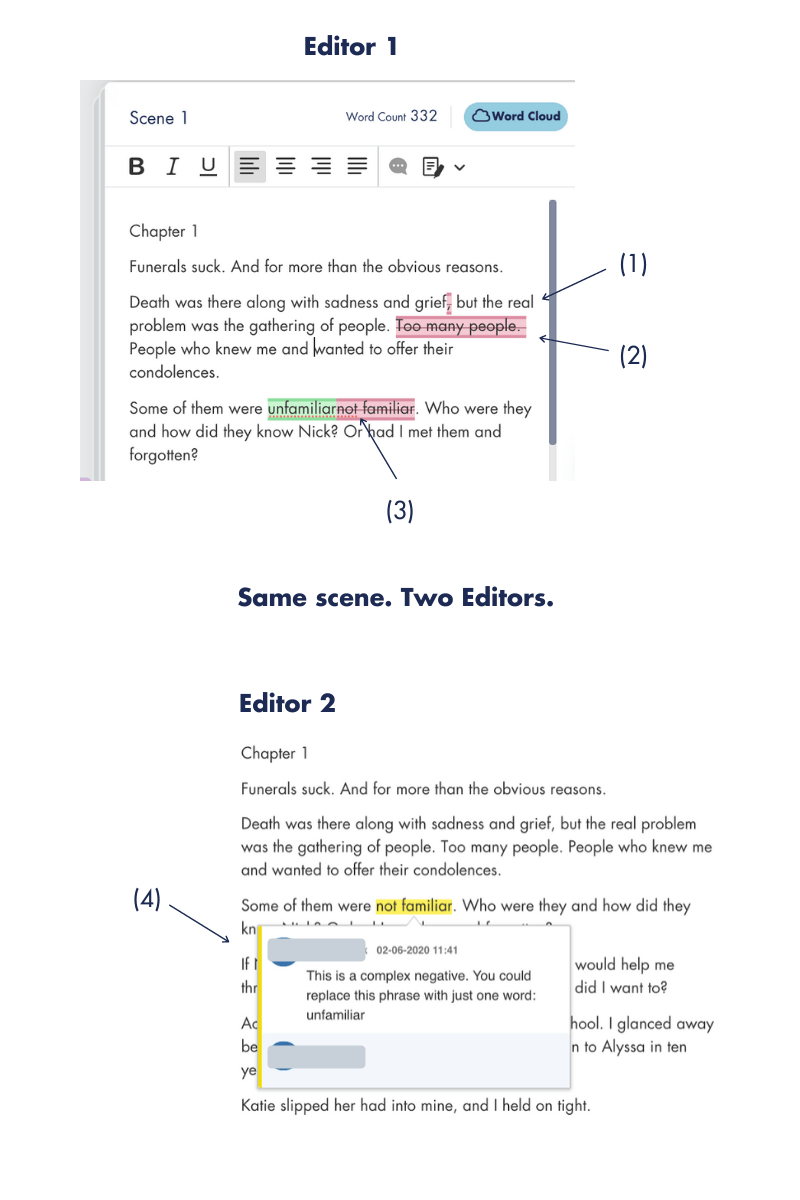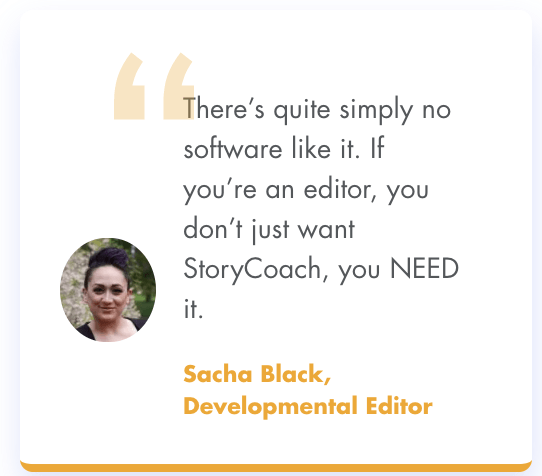Fictionary’s series on manuscript editing is just beginning. Thirteen editors performed a Story Edit on the same manuscript. We’re going to share the results, so editors and writers can learn from the experience.
The goal of this series is for writers to know what they’re buying and for editors to know what to offer as part of their editing service. First, we’ll review a scene where two editors have performed a copyedit as part of a Story Edit.
![]()
Story Editing
As a quick refresher, a Story Edit, also called a structural, developmental, or substantive edit, is the primary structural review of your manuscript and the story you’re telling.
Story Editing is your big-picture approach to preparing for publishing. It’s your first structural revision. This is when you rework your characters, plot, and settings to ensure the story line and narrative flow smoothly while every scene contributes to the story’s purpose.
Story Editing means looking at the characters and asking why each one is in the story. It means looking for patterns, finding emotion, evaluating the structure of scenes, structuring chapters and word count. It means testing the setting against the plot, and so on.
![]()
Copyediting
After you’ve finished a Story Edit, copyediting is the most essential and fundamental preparation you need before publishing.
A basic copyedit includes checking your grammar, spelling, and punctuation for accuracy; ensuring consistency in your writing, word choices, style and compositional spacing; and eliminating jargon and repetitious words. It’s your last edit before formatting and proceeding to proofreading and publishing.
![]()
Two Story Edits Performed by Two Editors on the Same Manuscript
Both editors worked on a story where a writer requested a Story Edit and not a copyedit.

(1) Comma removal
Editor 1 recommends removing the comma after the word “grief ” in the following sentence.
Death was there along with sadness and grief, but the real problem was the gathering of people.
The sentence is made up of two independent clauses joined by a co-ordinating conjunction. Therefore, the comma is required. The advice to remove the comma is incorrect.
The sentence could be written as two sentences and still be grammatically correct. If you’re unsure about whether a comma is needed, you can try writing the sentence as two sentences. If you can, it means clauses are independent.
Death was there along with sadness and grief. The real problem was the gathering of people.
(2) Deleted sentence
Editor 1 has used the track changes functionality to delete the sentence “Too many people.”. The first problem is there is no explanation why this is being recommended. The second problem is this is a sentence level style recommendation. This type of recommendation should be given during a copyedit and not a Story Edit.
(3) & (4) “Unfamiliar” versus “not familiar”
Both editors recommended changing “not familiar” to “unfamiliar”. It’s the same advice, but editor 2 explains why they recommended the change. The more informative advice will teach the writer how to improve their style and show them what to look for when they eventually perform a copyedit.
![]()
Know What You Need
Imagine you’re a writer who has paid for a Story Edit. Are you going to be happy with copyedit changes that are incorrect or come with little explanation? Probably not. Sometimes a copyedit can give the impression a lot of work was done. That may be true, but it’s the wrong work at this phase of the editing journey. Both the writer and the editor may feel productive, but spending time on style changes before the story is strong can waste time.
I’ve only shown you a small portion of the Story Edit to illustrate different styles editors have.
My assessment based on the edit of the full manuscript is that Editor 1 is a copyeditor who is working outside their area of expertize or comfort zone. Editor 2 performed minimal copyediting during the Story Edit, but when they copyedited, they gave the writer an explanation of why they recommended changes.
As a writer, you need to be clear on what you want from an editor. If your knowledge of grammar is strong, having changes recommended without an explanation may be perfect for you, so you can accept or reject changes quickly. If grammar is not your thing, and you’re learning as you write, then you’ll want an editor who gives the explanation.
![]()
A Fictionary StoryCoach helps writers tell a powerful story and makes the writer’s voice shine! You can now try Fictionary StoryCoach for editors for free!

And there’s more. The Fictionary Certified StoryCoach training is available.
Do you want to become a Fictionary Certified StoryCoach? Check out Fictionary Certified StoryCoach Training.
If you’d like to take the training, send me (Kristina) an email at helpful.editor@temp-fictionary.flywheelstaging.com telling me why you’d like to become a Fictionary Certified StoryCoach, and I’ll give you a discount.
The Fictionary StoryCoach Certification training program helps editors deliver a comprehensive and objective editorial package using StoryCoach software.
We developed this training for two reasons.
- The first is for fiction editors to have a place to learn how to perform a high-quality story edit, get certified, and then have a tool (StoryCoach) that helps them perform exceptional story edits.
- The second is for writers to know they are dealing with a professional editor who understands story when they hire a Fictionary Certified StoryCoach.
For more on story coaching check out: What is a Story Coach?


